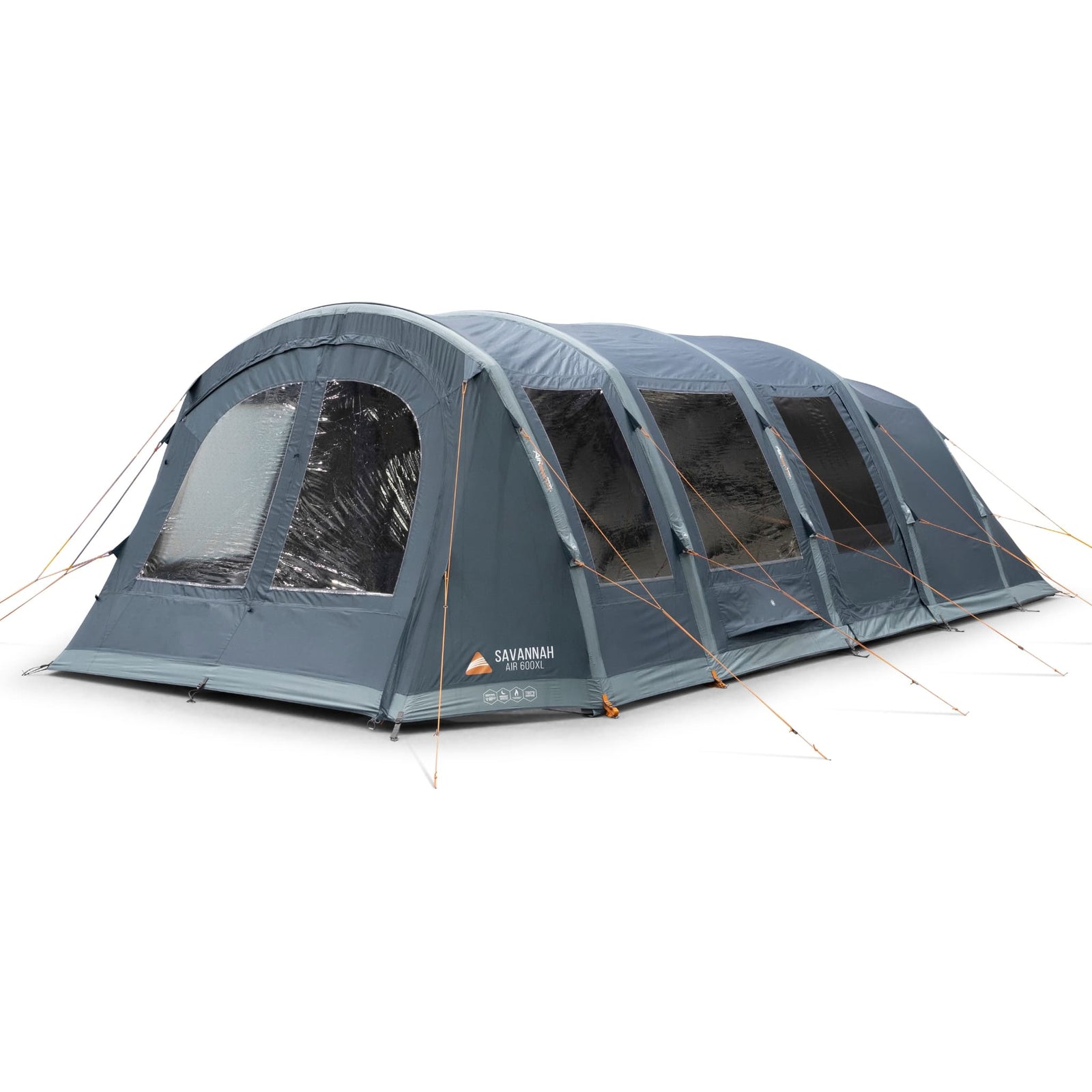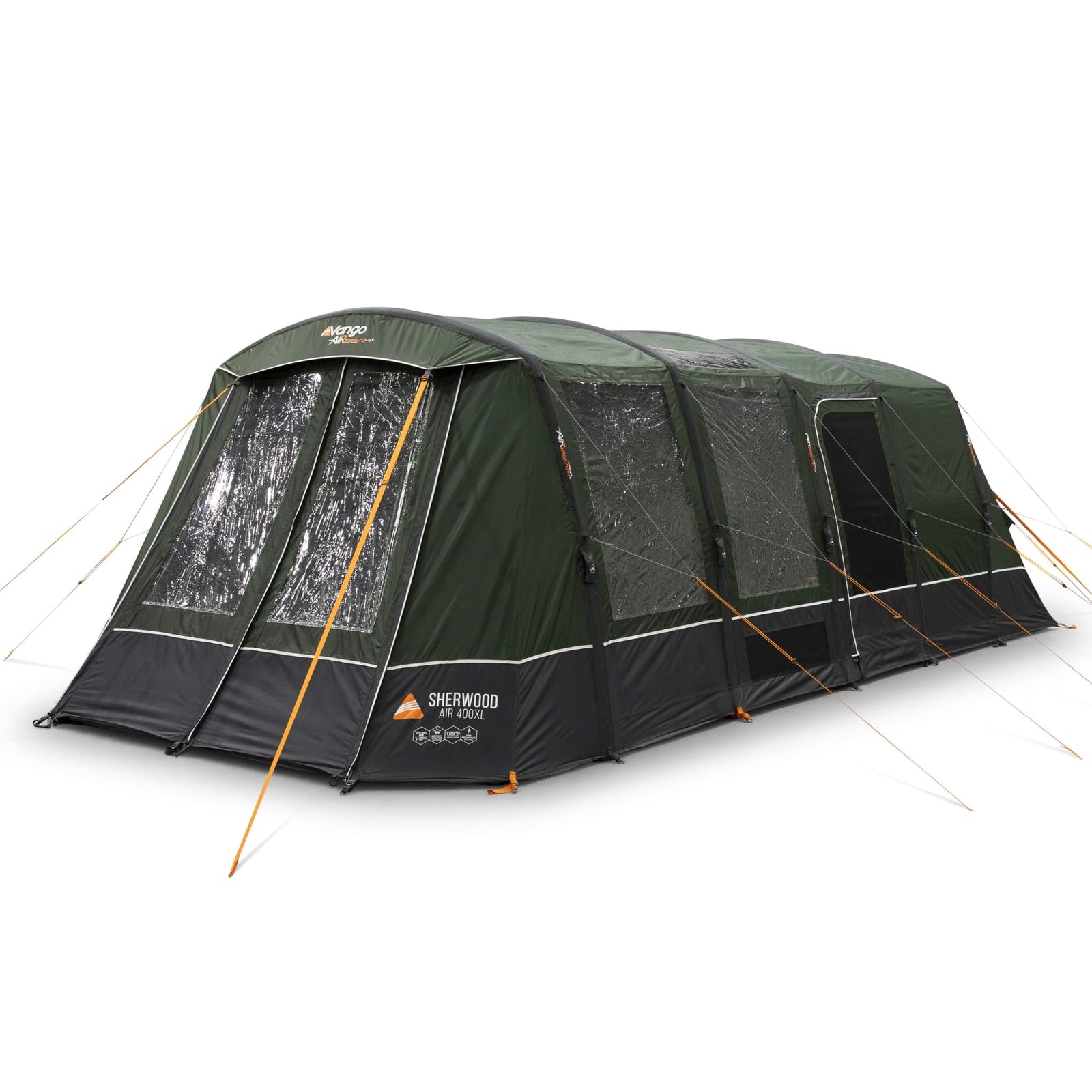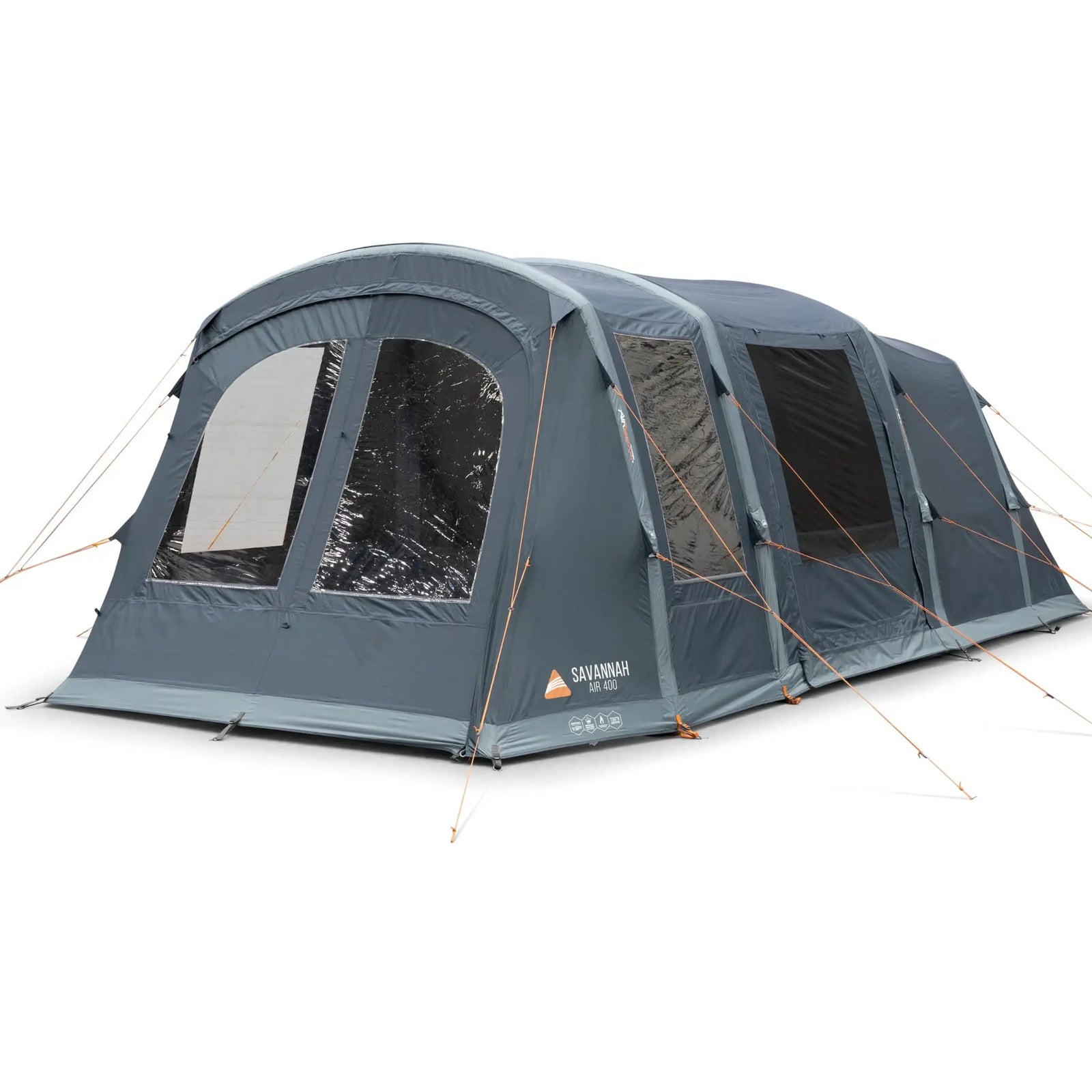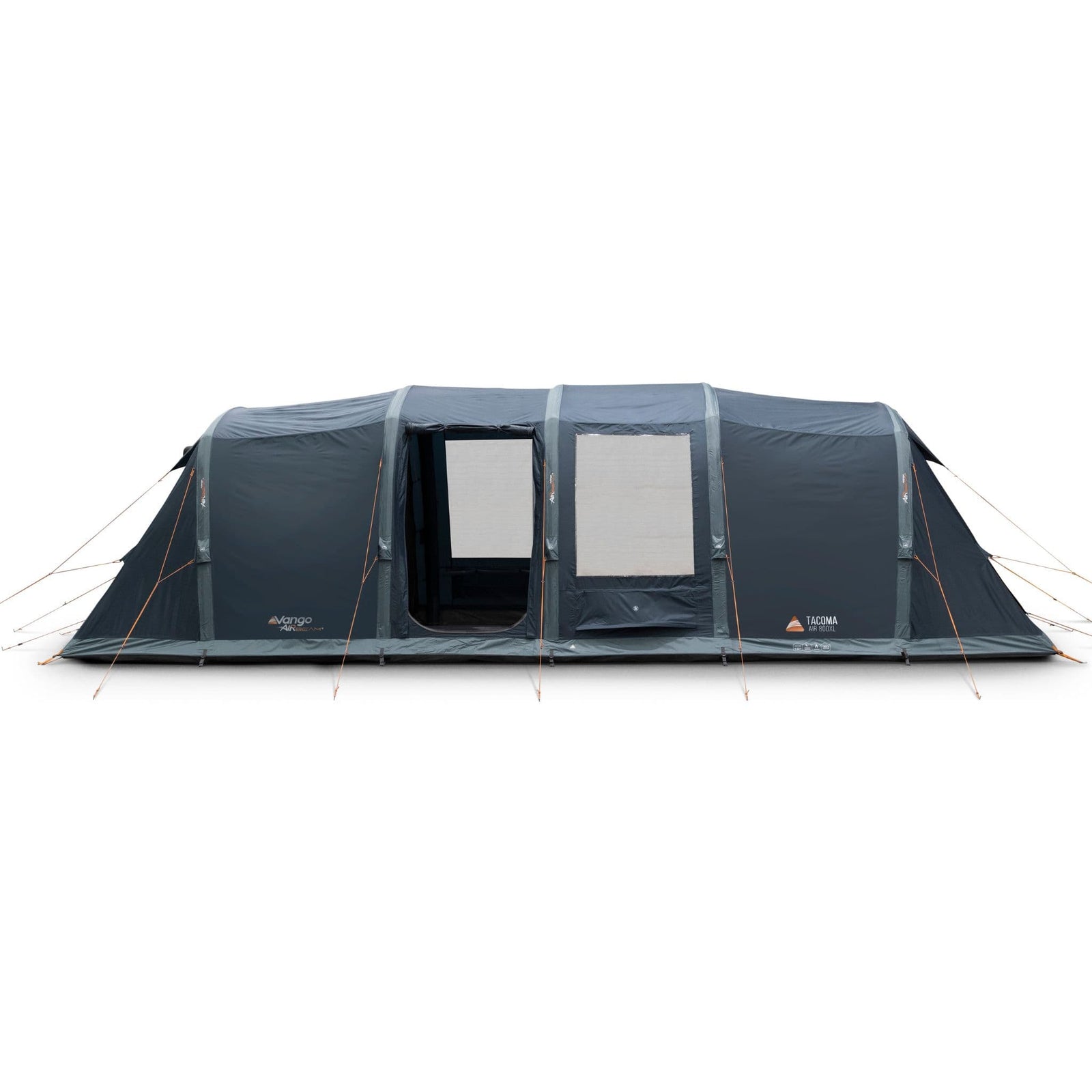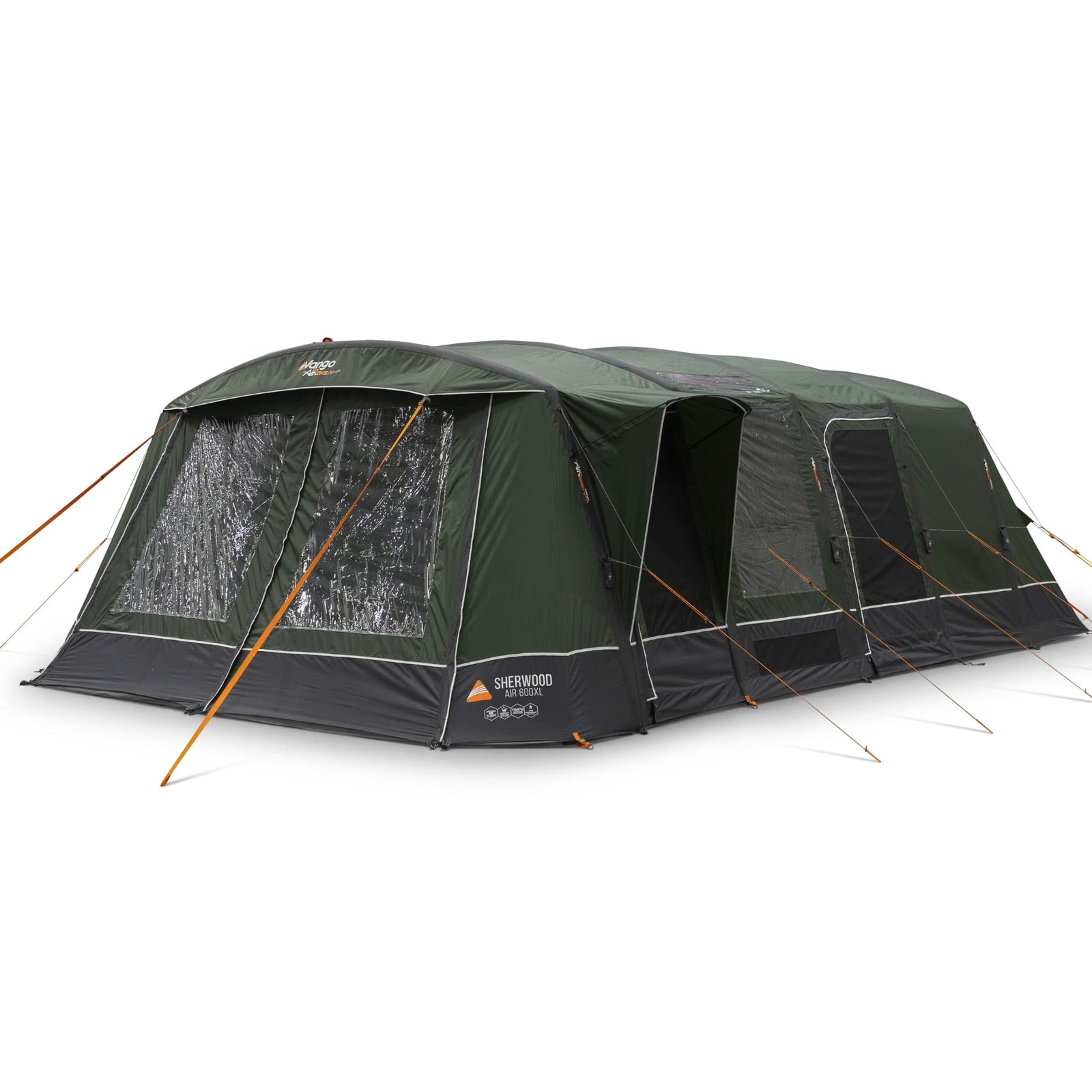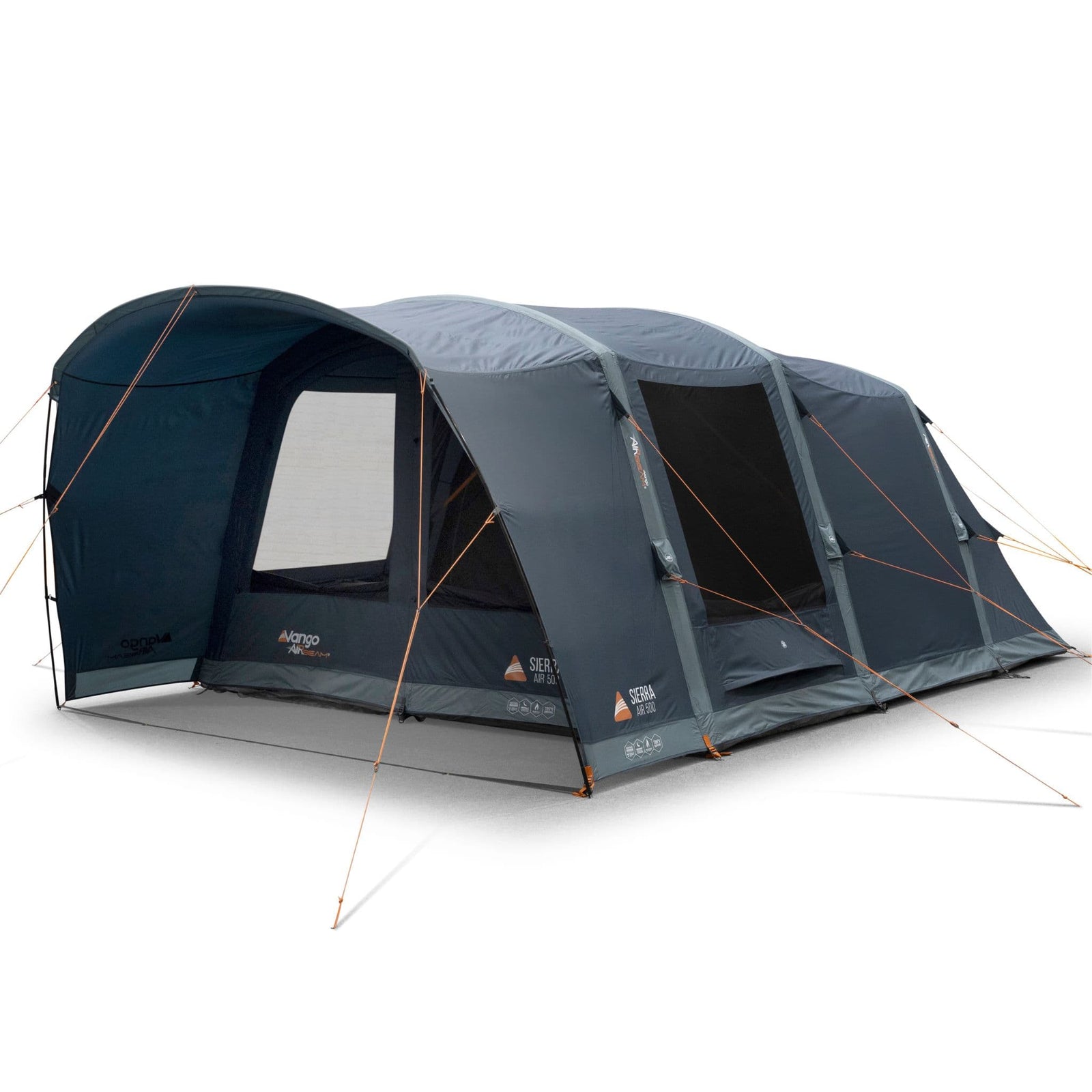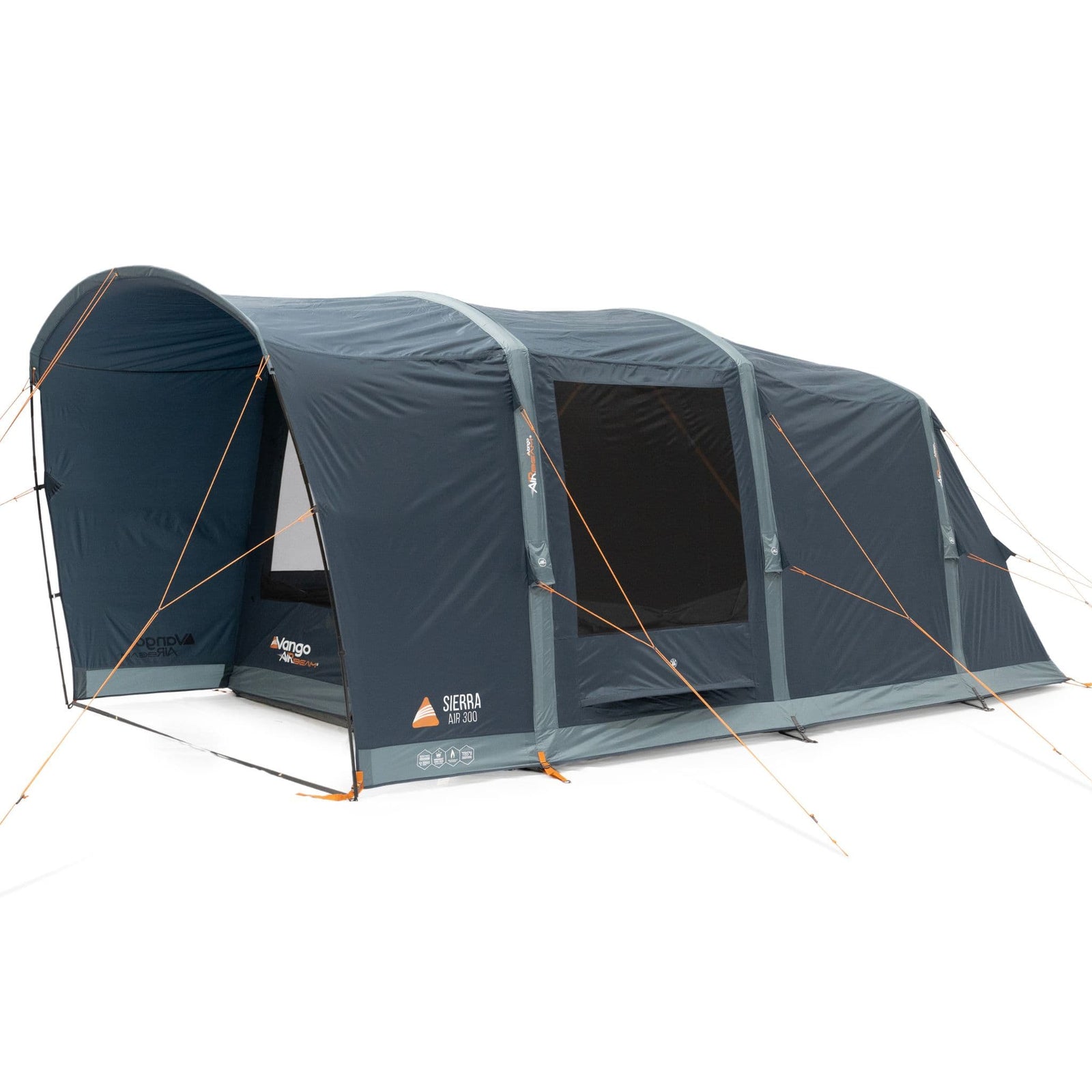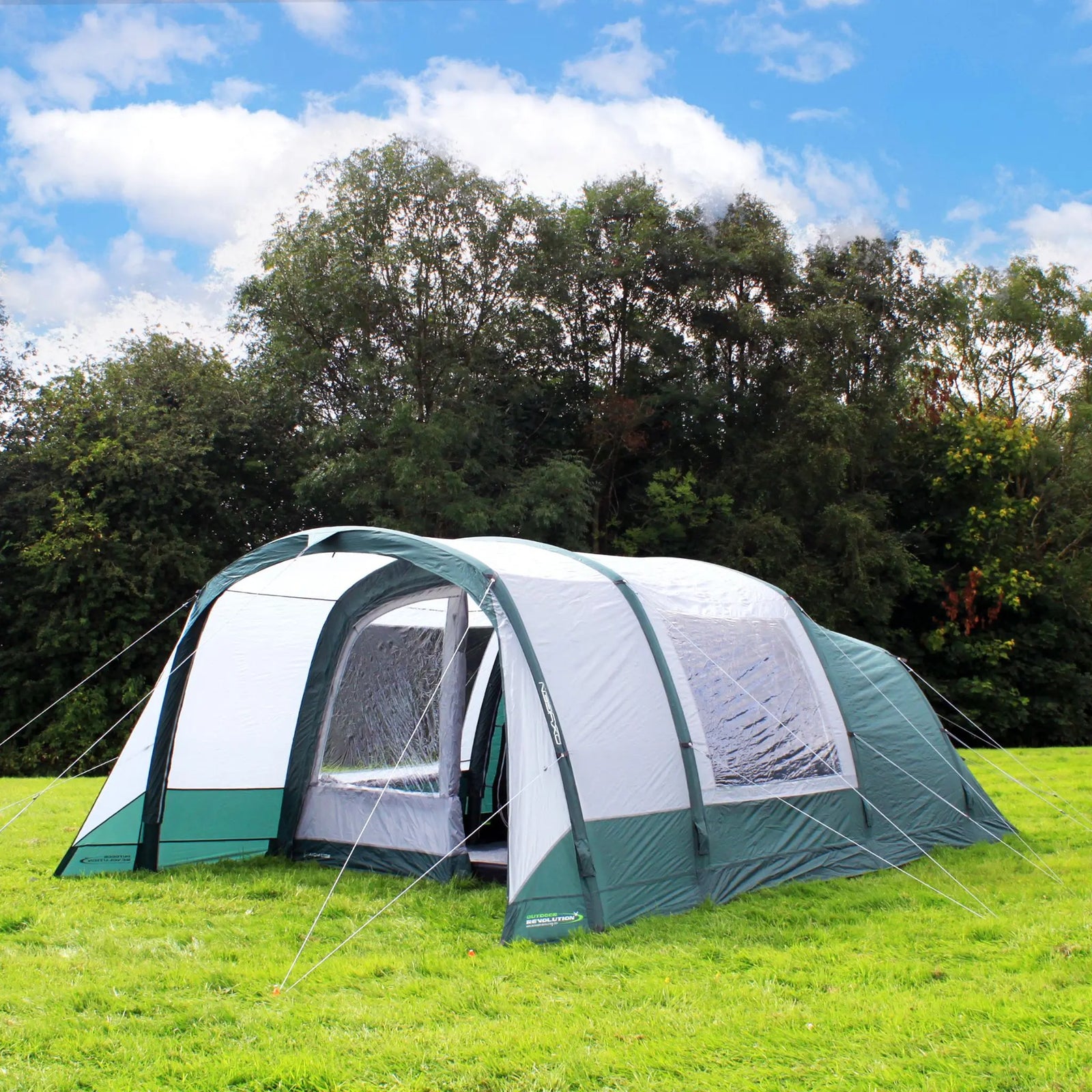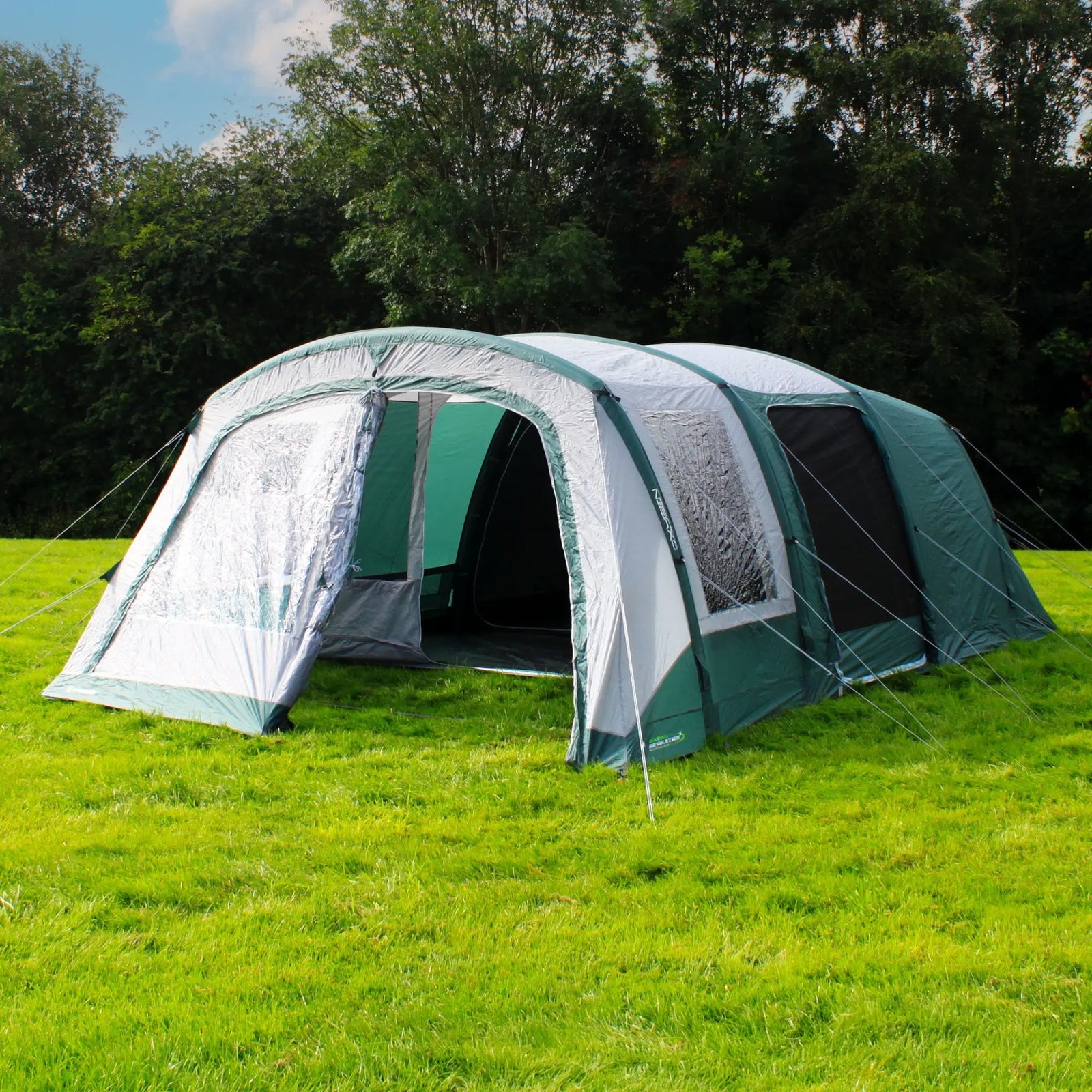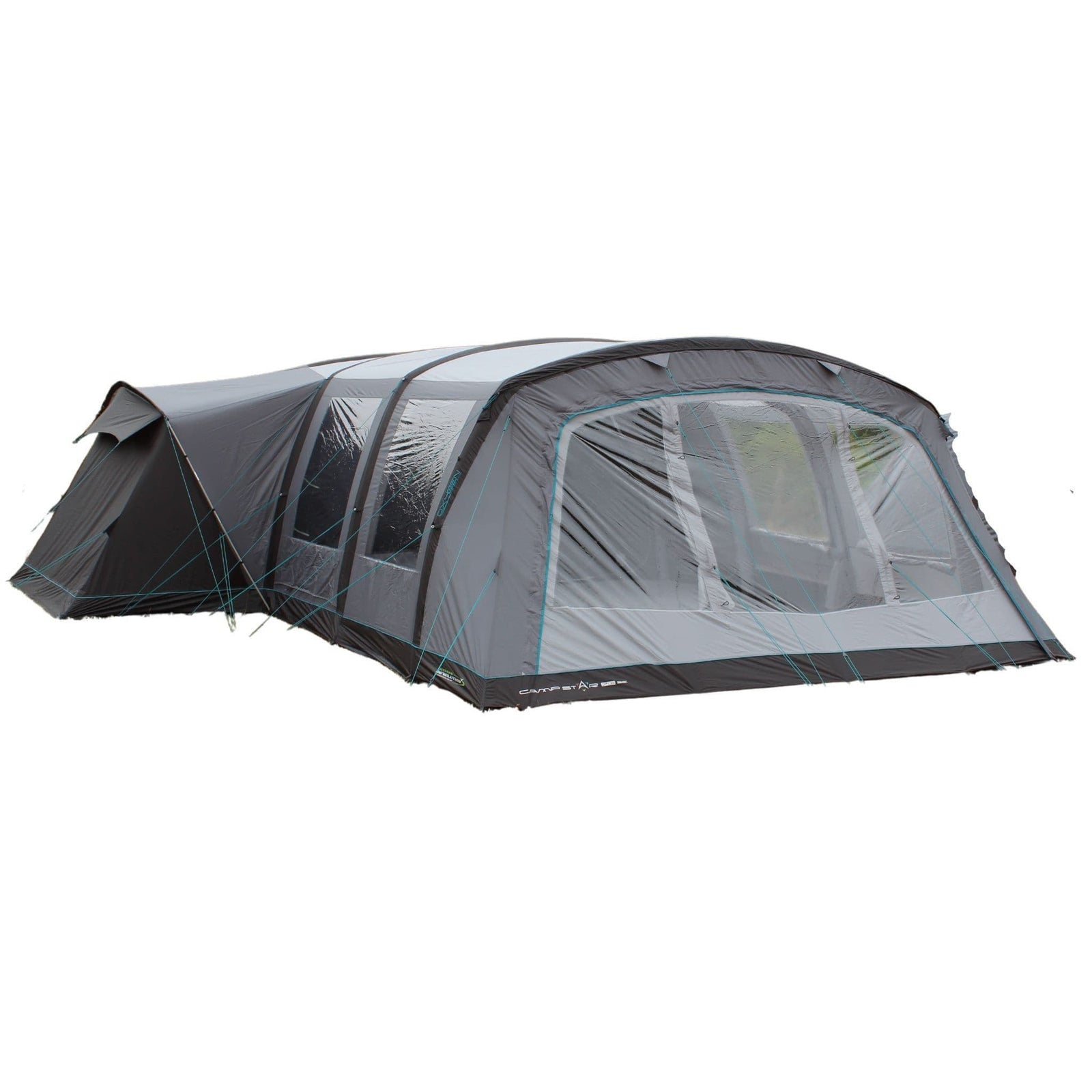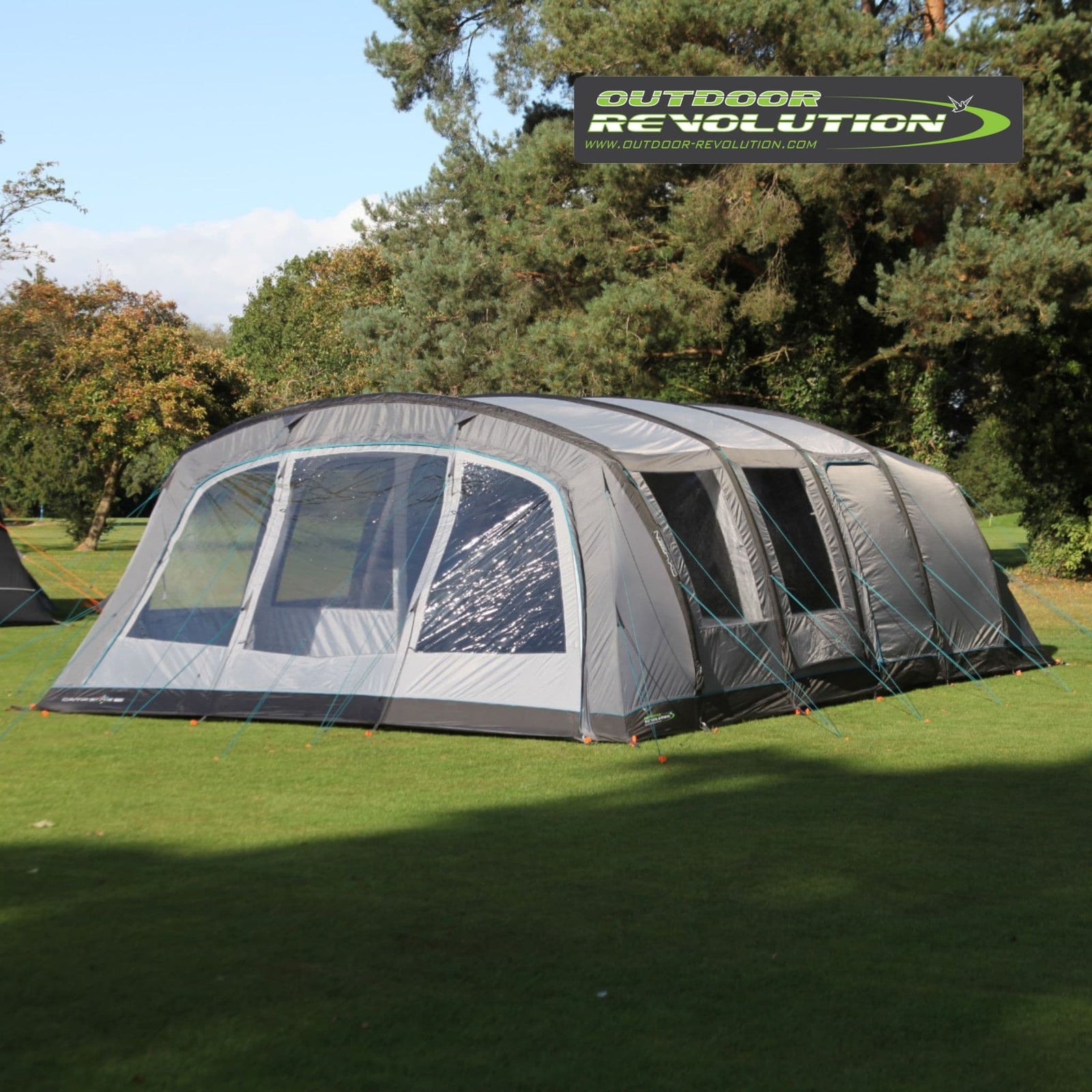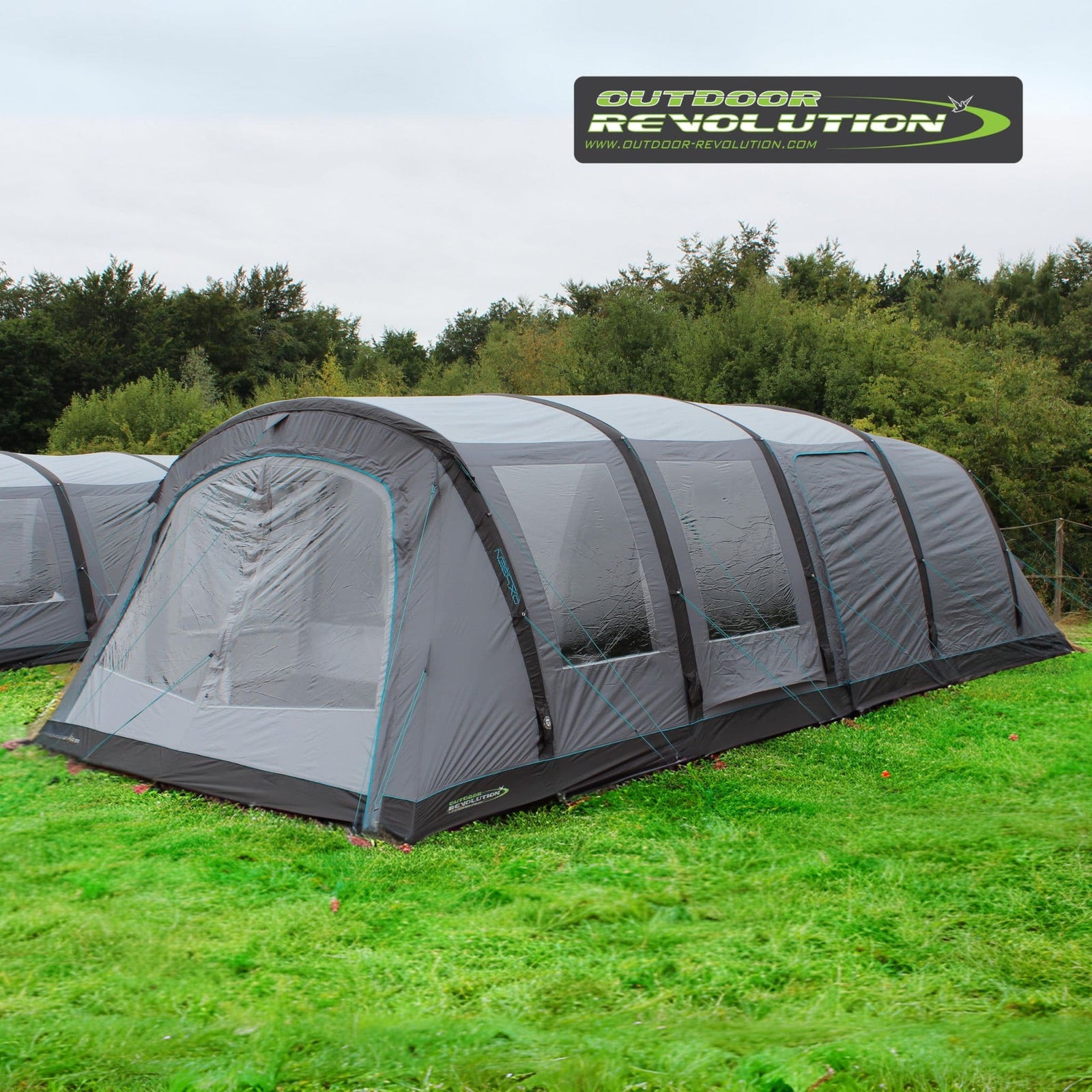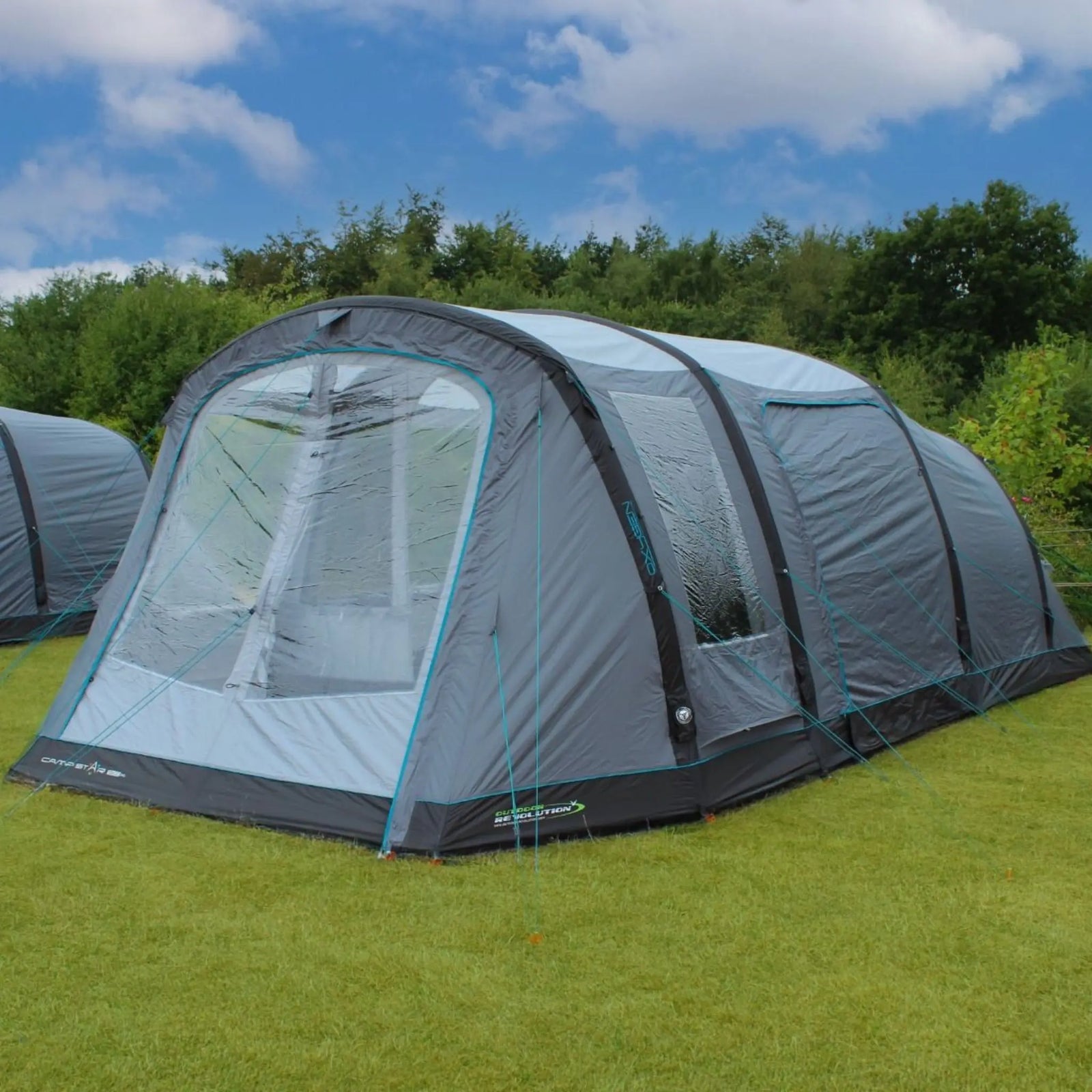
At WM Camping, our range of inflatable tents includes models from trusted outdoor brands such as Vango, Outdoor Revolution and Easy Camp, who are known for their quality and reliability. These tents combine quick pitching times with durable materials, making them well-suited to the British weather. Whether you’re looking for a compact inflatable tent for weekend trips or a large inflatable family tent for longer holidays, you’ll find plenty of choice in our collection.
Inflatable tents are an excellent option for anyone who values ease and comfort on the campsite. With the right setup and a bit of care, they’ll provide many years of reliable usage, giving you more time to enjoy your camping trips.
Helpful Links - 3 Person Inflatable Tents | 4 Person Inflatable Tents | 6 Person Inflatable Tents
Inflatable Tents at WM Camping
Inflatable tents, often called air tents, use reinforced air beams that are pumped up to create a solid, upright structure. This design removes the need for fibreglass or steel poles, which makes pitching far simpler, something many campers appreciate, especially on busy campsites or in poor weather. Most air tents can be set up in a matter of minutes, allowing you to focus on getting the rest of your campsite sorted without the usual struggle of threading poles or sorting sections.
The air beams are engineered to stay firm once inflated, giving the tent a stable feel even in wind. Larger family models often include multiple beams, large living areas, and multiple bedrooms, while smaller four or five-person air tents offer a compact layout for weekend trips. Many tents in this category also include porches or covered entrances for storing boots and bags.
Brands such as Vango, Easy Camp, and Outdoor Revolution offer air tents in a variety of sizes, from budget-friendly models to more advanced designs with stronger beams and additional features. Whether you’re planning a short break or a longer stay on a campsite, an inflatable tent is a good option if you want to reduce pitch time and avoid handling poles altogether. If you need more space, our larger family tent collections offer additional room for extended holidays.
FAQs of Inflatable Tents
What makes inflatable tents different from poled tents?
Inflatable tents use air beams instead of poles to create their frame. Once inflated with a hand or electric pump, the beams create a solid framework that’s just as stable as a traditional poled tent but much quicker to pitch.
Do inflatable tents come with a pump?
All good camping brands that make inflatable tents include a hand pump as standard, but you can also use an electric pump for even quicker inflation.
Can an inflatable tent burst or puncture?
All air tents come with reinforced beams that are highly resistant to punctures. Even if a small leak occurs, repair kits are available to fix them quickly. For a step-by-step guide on replacing an air tube, check out our blog on repairing inflatable tent beams.
What pressure should I inflate the beams to?
Follow the manufacturer’s recommendation, usually between 7 and 9 PSI. A pump with a gauge makes it easy to stay within range. In hot weather, aim for the lower end since air expands with heat.
How long does it take to pack away an inflatable tent?
Deflating is as simple as pitching. Open the valves to release the air, fold the fabric, and roll it into its bag. It usually takes less than ten minutes.



